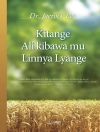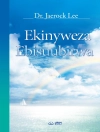Queer God de Amor explores the mystery of God and the relationship between divine and human persons. It does so by turning to the sixteenth-century writings of John of the Cross on mystical union with God and the metaphor of sexual relationship that he uses to describe this union. Juan’s mystical theology, which highlights the notion of God as lover and God’s erotic-like relationship with human persons, provides a fitting source for rethinking the Christian doctrine of God, in John’s own words, as “un no sé qué, ” “an I know not what.”
In critical conversations with contemporary queer theologies, it retrieves from John a preferential option for human sexuality as an experience in daily life that is rich with possibilities for re-sourcing and imagining the Christian doctrine of God. Consistent with other liberating perspectives, it outs God from heteronormative closets and restores human sexuality as a resource for theology. This outing of divine queerness—that is, the ineffability of divine life—helps to align reflections on the mystery of God with the faith experiences of queer Catholics. By engaging Juan de la Cruz through queer Latinx eyes, Miguel Díaz continues the objective of this series to disrupt the cartography of theology latinamente.
Table of Content
Preface to the Series | ix
Carmen M. Nanko-Fernández, Gary Riebe-Estrella, Miguel H. Díaz
Acknowledgments | xiii
A Note on References and Translations | xvii
Introduction : Inflamed by God’s Queer Love | xix
1. Doing Theology Sanjuanistamente | 1
Juan de la Cruz, a Disruptive Theological Voice | 3
A Starting Point in Ordinary and Daily Experience | 6
Mysticism and Sexuality | 7
Mysticism and Popular Catholicism | 9
Mysticism and Poetry | 11
A Queer “y qué” | 15
2. Disrupting God-Talk | 21
Option for the Bedroom and Human Sexuality | 23
On Knowing God | 30
The Apophatic Way: On the Dark Night of Knowing | 34
The Cataphatic Way of Knowing God | 38
On Naming God as un no sé qué | 44
The un no sé qué God Is Self-Communicating Love | 50
3. God’s Self-Communication | 52
God’s Self-Communication Conceived Sanjuanistamente | 55
The Recipient of God’s Self-Communication | 61
The Effects of God’s Self-Communication | 65
On Divine and Human Self-Communicating Love | 67
4. Ecstasis Divine and Human | 69
Making Room for Another | 71
The Fluidity of Divine and Human Persons: Personal and Dynamic | 78
Mystically Performative Fluidity | 82
On Divine and Human Desire | 85
5. Queering the God de Amor | 93
Queering Juan’s Mysticism, a Precedent | 97
Queering God-Talk Sanjuanistamente | 101
Queering God’s Self-Communication | 106
Queering the Ecstasis Divine and Human | 111
A Journey toward the Queer God de Amor | 114
Conclusion | 117
Index | 125
About the author
Miguel H. Díaz is the John Courtney Murray, SJ, University Chair in Public Service at Loyola University Chicago. Dr. Díaz served under President Barack Obama as the ninth U.S. Ambassador to the Holy See. He is a co-editor of the series Disruptive Cartographers: Doing Theology Latinamente and author of the third volume in the series, Queer God de Amor (Fordham). As a public theologian, Professor Díaz regularly engages print, radio, and television media. He is a contributor to the “Theology en la Plaza” column for the National Catholic Reporter. As part of his ongoing commitment to advance human rights globally, he participates in several diplomatic initiatives in Washington, D.C., including being a member of the Atlantic Council, a member of the Ambassadors Circle at the National Democratic Institute (NDI), and a member of the Board and Senior Fellow for Religion and Peacebuilding for the Alliance for Peacebuilding (Af P).







![Cover of Brian Schrag & Julisa Rowe: Community Arts for God's Purposes [Chinese] 貼近神心意的社群藝術 Cover of Brian Schrag & Julisa Rowe: Community Arts for God's Purposes [Chinese] 貼近神心意的社群藝術](https://static.worldofdigitals.com/thumb_webp/740/9781645083740.webp)




